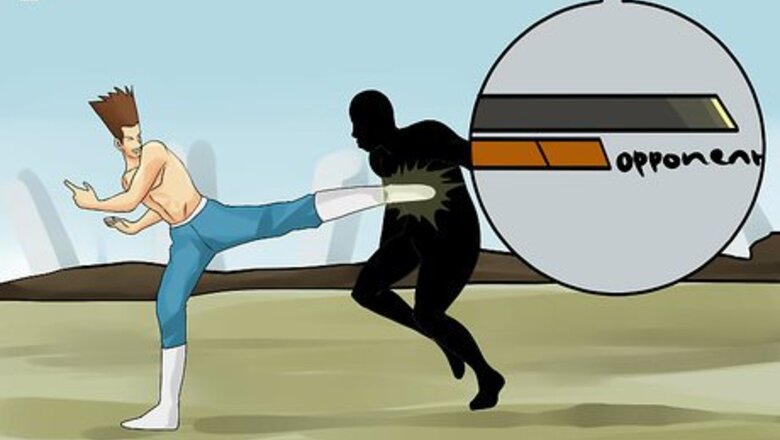
views
Adjusting to Any Fighting Game
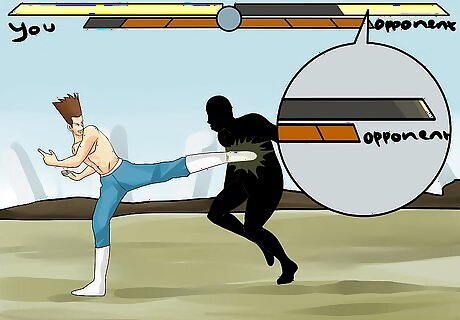
Reduce your opponent's health bar to zero to win the round and the game. The point of a fighting game is simple -- you trade blows and blocks with 1-3 opponents in order to knock them out. While the exact rules vary from game to game, more often than not you play until someone wins 2 out of 3 rounds, ending the match. If you're learning to play fighting games for the first time, just pick up the one that piqued your interest. Don't worry about finding the perfect introductory game. All fighters have a tutorial section in the main menu that will help you learn the precise rules of your game, but the basics are similar from game to game.
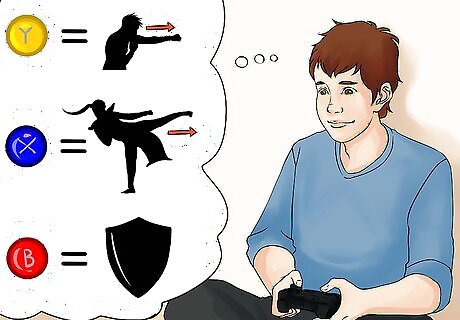
Start a basic 1-player game or tutorial to get used to the controls. The buttons for each fighting game are different, so just spend some time getting used to them for your game. Don't worry about winning at first, simply start a fight (usually "Fight Now!" or "Single-Player" on the main menu) and experiment with each button. You can also use the "Practice" or "Tutorial" mode to get used to the buttons without someone attacking you. The buttons you must know in order to get started are: The different attack buttons ("heavy" vs. "quick;" "punch" vs. kick;" etc.). Block/Shield Jump. Grab/Counter
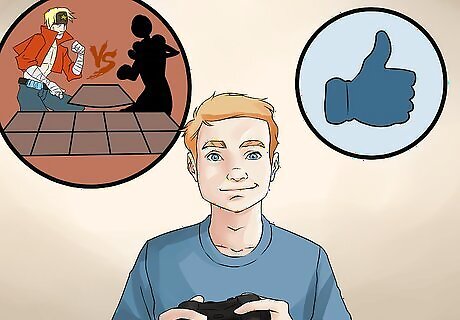
Practice through the challenge or tutorial modes with 3-4 characters. Experiment with characters you think looks cool or enjoy playing with, then sit down to really get to know them. Most games have "Challenge Modes" within their tutorials that test and teach certain skills, helping you get used to the timing of fighting games. A good fighter is all about timing -- executing perfect blocks right on contact, punching right in the open half-second before you get attacked, and stringing together quick combos. The only way to learn them is to practice, so pick a few characters and dive a little further into the game. Once you've played through a few characters, pick one and stick with them. You want to learn one character inside and out before trying to master them all.
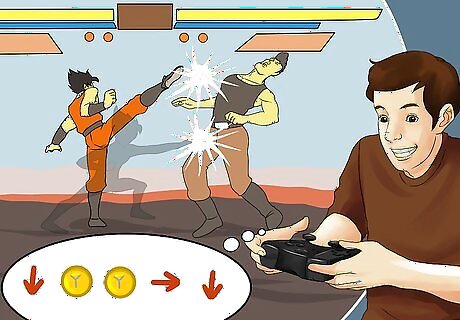
Start memorizing a few combos for your favorite character. Combos are the bread and butter of fighters. They are specific series of buttons, performed in rapid succession (such as ABBA + Down), that lead to a unique attack. You can find them online or in the tutorials, and will need them in order to beat anyone but the most basic fighter. Some things to note as you start learning combos: How long does it take you to pull off the move? You need to finish the combo quickly or an opponent is going to take advantage your pause and attack. Do the combos hit from a distance? Do you need to be right up close? Is there a combo meter or power bar under your health? In some games you can only use combos when this little bar is filled.
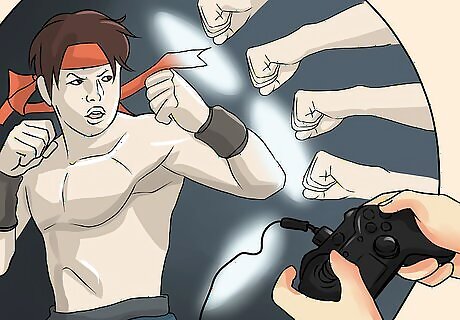
Avoid damage by blocking on time with each attack. Blocking is generally done by pressing a button or tilting your control stick away from your opponent. Blocks usually deflect a large percentage of damage, especially when they are timed perfectly. Fighting games are not all about constant offense, and becoming an effective blocker can help you turn the tide against experienced players and button mashers alike. In many games it is possible to counter a block with a grab or throw, so don't expect to block the whole time and take no damage.
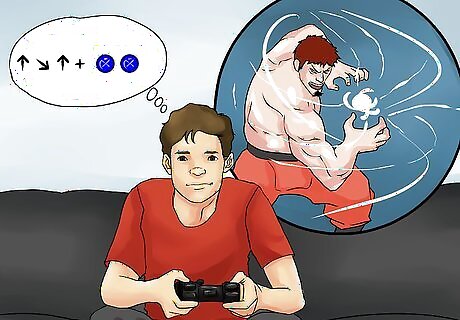
Find a character that you like and practice with them until you are familiar with their moves. Once you are comfortable with a character you can learn their combos inside and out. Combos refer to landing consecutive strikes on an opponent in a way that gives them no chance to strike back or break free. The higher and longer the combo, the more damage you will do. Combos must be done fluidly and quickly, otherwise the game will just try and act out all of the individual buttons instead of the one combo attack. With joystick combos, where you need to press down, then over, etc, try and move the stick in one solid, continuous motion for the best results.
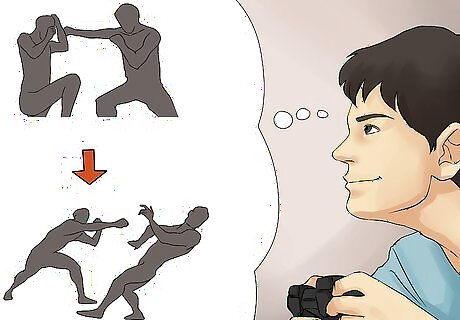
Understand the complex "rock paper scissors" game at the heart of most fighters. Fighting games are, to a large degree, complex games of countering and reading your opponent. Every move your opponent has can be countered by one of your own moves. The trick is knowing and anticipating your opponent so that you can get these counters off. The most simple counter is blocking an attack, but you also need to recognize when to use a throw against a block, a counter against a throw, and an attack to cut short an opponent's charging. The only way to learn these moves is to practice, practice, practice. Try and define a move in terms of what it wins against, what it loses against, and what it draws against. This will help you see the right response for every situation. Learn to recognize each character's animations. Many attacks have tell-tale signs that they are coming, and learning to react to them in a split-second will separate you from the beginners.
Beating Any Opponent
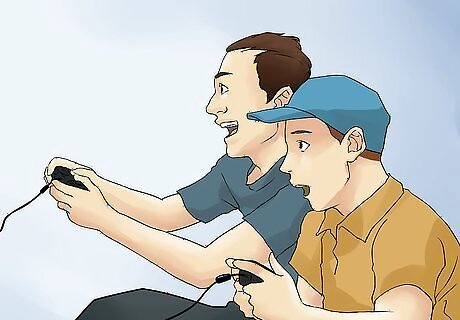
Starting fighting online or against your friends to greatly improve your skills. While fighting the computers is great to get started, you're going to quickly plateau if you don't fight better opponents. Head to the online modes or join in with a friend to really improve your skills against a living, unpredictable opponent. Almost all fighters have online modes that match you up against similarly skilled players automatically, so don't let worry about getting pummeled keep you offline.
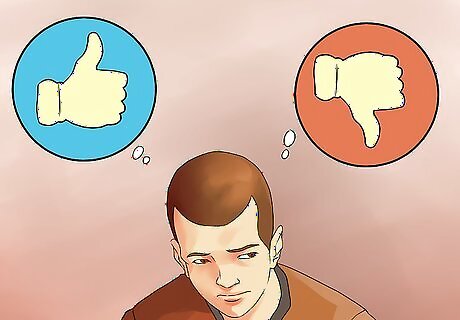
Understand the strengths and weaknesses of both characters in a given battle. Each character often has similar moves, but their timing, reach, damage, and speed are often wildly different. This means that certain characters have an advantage over others, and you need to play each character a little differently. While a complete list of differences across all games is impossible, in general: Know if you favor speed or strength. Quick characters need to dart around and pepper lots of attacks at the opponent while stronger characters need to pick the opportune moments to deal major damage. What is your reach? Does a character have long attacks and lots of projectiles, or do they need to get up close. What about your opponent? Search online for your game's "Tier List," which is a ranking of how good each character is against each other character as written by professional players.
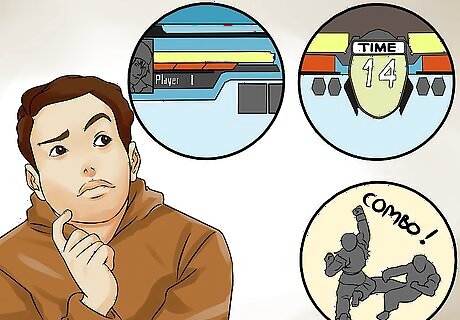
Think about the whole game, not just the present moment, to win more fights. Fighting games are not purely based on your reactions, though they appear that way to outsiders. You need to keep the entire game in your mind as you play. For example, if you have one or two attacks that are connecting early on, you shouldn't expect to rely on them the whole fight. Your opponent will quickly adapt and punish you for a lack of creativity. You might, instead, save these attacks for the opportune moment, making the most of them to catch your opponent off-guard. Is the game on a timer? If so, the player with the most health when time runs out usually wins. This might lead you to take more or less risks as the clock winds down. Are there special bars to fill up? Usually blocking fills up your combo or special bar, so starting out reserved and then surprising your opponent with a big attack could be more effective then attack right out of the gate.
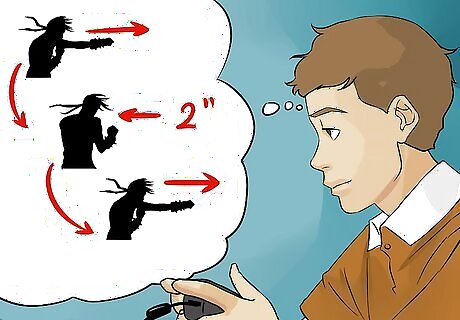
Know the timing of every one of your attacks. After an attack, how long is it before you can move again? How long does it take to start an attack before it deals damage? In general, the longer these times are, the more damage the attack does but the more vulnerable you are to a counter-attack. You need to know how long it takes to complete a full attack to make the most of your moves, and to know when you can safely move in on your opponents.
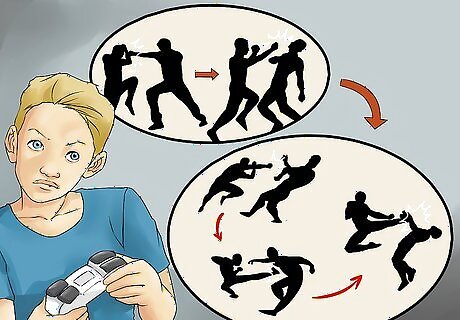
Learn how to condition your opponent to surprise them with big hits. Conditioning is when you make your opponent expect a certain attack, then switch things up to gain the upper hand. Conditioning is essential for all top-tier players and takes many forms. You can condition using the game by cutting common combos short, you can condition over long matches by sticking to one strategy before brutality changing gears, and you can condition opponents with repeated attacks, changing it up just as they get used to blocking it. The essence of conditioning is playing your opponent, not just reacting to them.
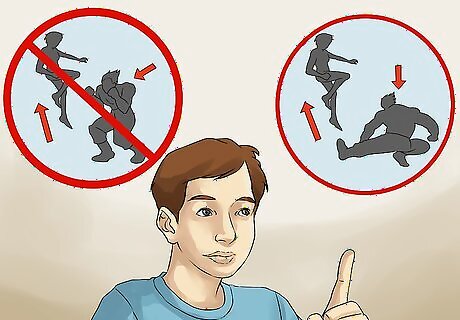
Avoid jumping forward unless absolutely necessary. Jumping is predictable. Once you're in the air, you can't block or change directions, giving your opponent plenty of time to get ready and counter your attack. While there is time for jumping to surprise, dodge, or initiate a combo, you should save it for sparse, opportune moments.
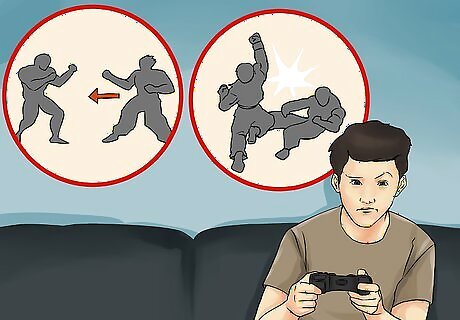
Be patient as you play. Resist the urge to constantly attack, especially when you have the lead. Make your opponent come to you and dictate the flow of the fight that way, picking them off when they make mistakes and tempting them to take risks to get the fight even. Playing conservatively is all about reading your opponents and breaking them down bit by bit, and though it takes some patience, all the best players do it.
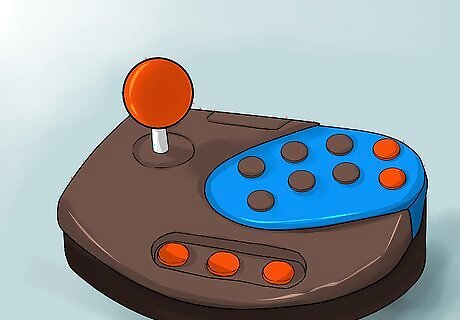
Get a joystick if you are serious about fighting games. A gaming pad with buttons and joystick is essential if you want to seriously play fighting games. They are usually $40-80 and come in a variety of designs. If you have any plans of competing in fighters, you'll need on to stand a chance, as they are more responsive to movement and quick combos than a controller.




















Comments
0 comment